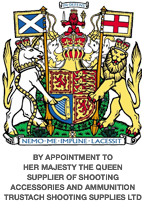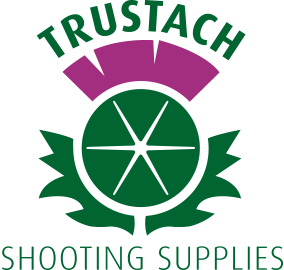Shot Size
The usual shot sizes often used for game would be UK shot sizes 7 (2.4mm) 6 (2.6mm) and 5 (2.8mm). Whilst the difference in the diameter might not seem great, the pellet count / pellet weight differences are quite significant and worth noting. In 1oz (28g) there are c.340 7’s, c.270 6’s and c.220 5 shot. Perhaps more significant is the individual pellet weight with 0.08g per 7 shot, 0.1g per 6 shot and 0.13 per 5 shot. This again might not seem much but it means a number 6 shot pellet is 25% heavier than a number 7! A 5 shot is 30% heavier than a 6 shot and an impressive 62% heavier than a 7 shot. What this translates to for the game shooter is the need to select the correct pellet size for the quarry to ensure clean and humane kills, especially on high birds. 7 shot on a very high pheasant will simply not have sufficient energy to be consistently effective or humane and for these reasons should not be used. Use 6 or 7 on smaller game birds such as snipe, woodcock, pigeons and perhaps partridge where the distances are not excessive. 6 shot on pigeons, partridge, and ‘average’ pheasants 5 shot (perhaps even 4 shot) for high pheasants and ground game such as rabbits and hares. It is perhaps worth commenting that there is an increasing move by shooters towards larger shot sizes than have been used previously as they are finding the larger pellet size much more effective resulting in less wounding and more humane, effective kills.
Cartridge Length
The maximum length is determined by the chamber length of the gun and it is very important NOT to use a cartridge of a longer length than the gun is manufactured to take. Do NOT be tempted by the fact that a 2 ¾” or 3” cartridge will fit in your 2 ½” chambered gun to fire it! The cartridge length refers to the case length WHEN FIRED. As a rule of thumb, the longer the case, the greater the payload it can contain and the higher the payload, the higher the operating pressure. Spend a few minutes checking your gun carefully for both the chamber length and proof pressures and if you have any doubts – consult a professional gunsmith for advice.
Payload
This will depend on the quarry, range and chamber length of your gun. For most game shooting with a 12 gauge gun, 28g, 30g and 32g (1oz, 1 1/16 oz and 1 1/8 oz respectively) would be the most usual payloads. For high birds with a 2 ½” chambered gun either the 34g XL or 32g Long Reach are ideal whilst in 2 ¾” the 36g Magna will give you all the performance you need . The use of large payloads, particularly in smaller calibres, poses some problems, especially recoil, and raises other issues too. Very heavy payloads means the height of the shot column in the cartridge is increased quite significantly. On firing, unless a slow burning, high quality powder is used, a very large proportion of the pellets at the bottom of the shot column are rapidly compressed and damaged on detonation and the cartridge will pattern poorly. All Caledonian cartridges are carefully designed to balance the payload with the pattern and performance they deliver.
Plastic or Fibre Wad?
Many game shoots now specify fibre wads only. The Fibre wads used by Caledonian are 100% fibre and our 12 bore wads are manufactured to the highest quality. Do BEWARE as some so called ‘fibre’ wad cartridges use a short fibre wad column backed with a plastic obturator (gas seal) and so do contain plastic wad components. We are aware that some shooters have been put in some very embarrassing situations with owners and gamekeepers because of this. Is it true that plastic or photodegradable wads will give tighter and often more even patterns than fibre wads? It is true, as the shot is contained in a plastic cup and so is protected from the barrel walls when fired. Damaged pellets, caused by this or too rapid an initial acceleration on firing, will result in less even patterns and perhaps ‘fliers’ – pellets outside the main shot pattern area.. This however, can be greatly reduced by using a fibre wad cartridge which accelerates the shot smoothly resulting in less pellet deformation and less disrupted patterns.
Velocity
It is worth remembering that muzzle velocity tells you little about the speed of the shot where it counts – at 20-50 yards. 1450 feet per second does sounds impressive but is the shot decelerating quickly and how fast is it where it really matters? In addition, very high muzzle velocity can disrupt the pattern badly resulting in gaps and grouping of shot within the pattern leading to missed or wounded birds. All Caledonian cartridges are checked to ensure the observed velocity (at 20 yards) and the pattern thrown is consistent shot after shot and sufficient to provide good clean kills at range.
Shot
Our lead shot for game cartridge contains 2% Antimony. This hardens the shot slightly helping reduce deformation during firing and as it travels down the barrel but means it is still malleable and will deform on impact thereby delivering very effective knockdown performance on game. We do use 5% antimony in our Monarch game cartridge and our Elite Pro clay cartridges for that extra performance.
Recoil
Many shooters use the adage “If it kicks it must be fast” as a measure of the speed of a cartridge which unfortunately is not a very good yardstick and is often untrue. Recoil is not only uncomfortable whilst shooting it can cause permanent problems over time. It also means the second shot can be delayed momentarily while you recover from the first one. High recoil in a cartridge can be due to the use of a very fast burning powder which does not accelerate loads smoothly and more importantly often results in very disappointing downrange speed and effectiveness despite what you may expect. Recoil can be minimised by using various recoil reducing aids, perhaps a heavier gun or even a semi automatic where appropriate. Try and match the gun with a realistic payload for it – 36g cartridges in lightweight game guns are likely to kick and be uncomfortable! Caledonian cartridges are manufactured using an exclusive range of high quality powders manufactured by Maxam in Spain. This means we can use exactly the right powder for the task in hand.
Dirty Barrels and Cartridge Storage
Fast burning powders burn very cleanly on firing and leave very little residue in gun barrels. However, they do not always provide the best way of accelerating shot in a quality cartridge where low recoil and high performance downrange is essential, particularly in the heavier loads. Very low temperatures can cause cartridges to leave what might appear to be some un-burnt powder or residue in the barrel but the effect on the actual performance is not significant and should not concern the shooter, especially if the gun is cleaned correctly after use. Cartridges are best stored at room temperature and it is best to avoid extremes of heat and moisture, such as loft spaces and garages which can be very cold in winter and rather warm in summer. It is also important to ensure that cartridges are stored safely and securely at all times.

